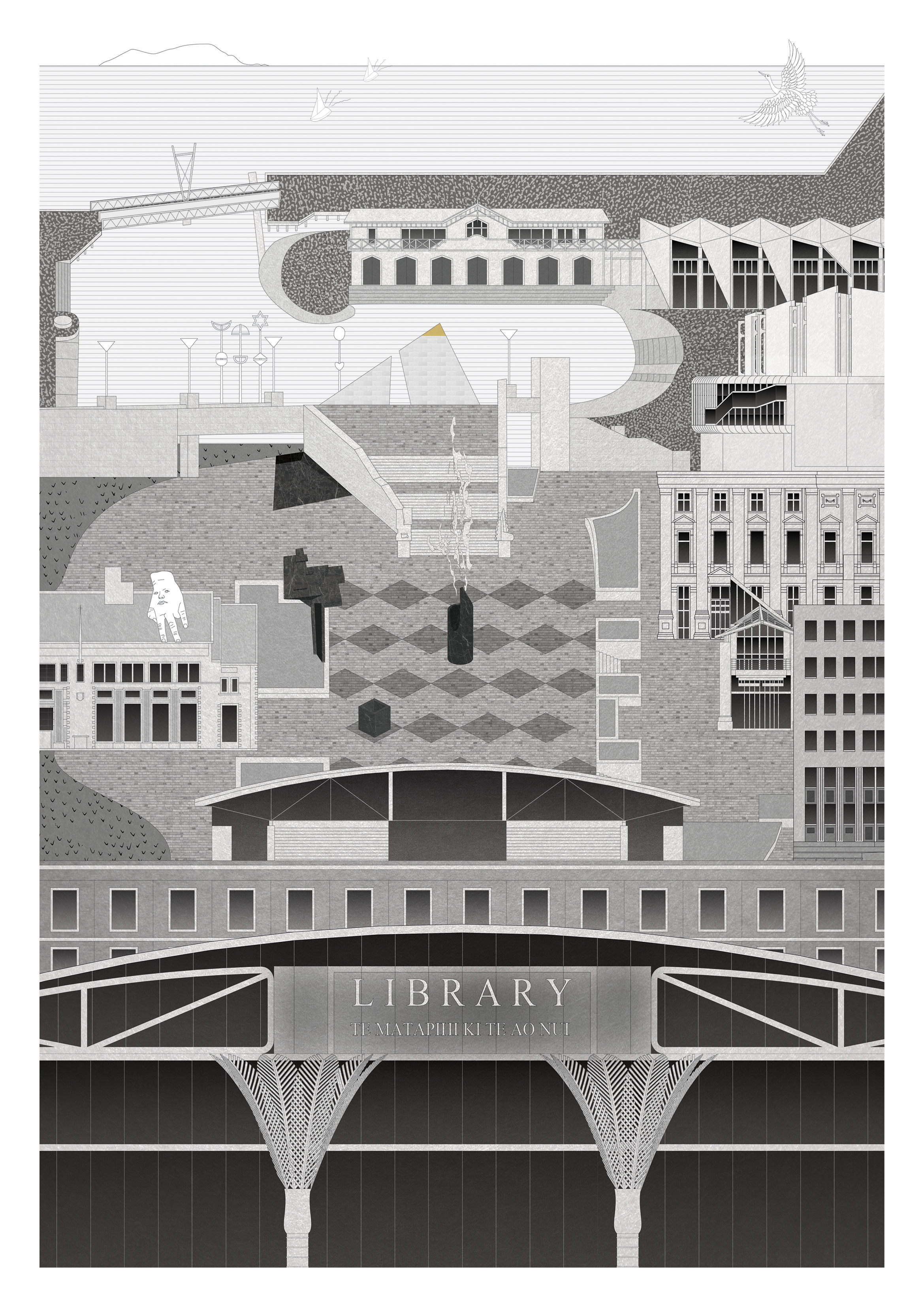Te Waka Huia
FIRST PLACE: NZIA Wellington Central
Library
Design Competition
RUNNER-UP: Open Conceptual Category
AAA Visionary Architecture Awards 2020
2019
collaborated with Jason Tan, Tyler Harlen and poet Michelle Curnow
Exhibited during the New Zealand Institute of Architects Festival of Architecture at Te Auaha Wellington.
Featured in Issue 3 of the NZIA publication Tāpoto, the brief within Architecture New Zealand, November 2019 (issue 6)
SYNOPSIS
Te Waka Huia: The treasure box.
Te Waka Huia looks at Wellington Central Library as a collection of memories within the city, rather than just a collection of books. This collective memory of the city is represented through designed and collected forms and objects. These objects denote the past present and future histories, both Māori and Pākehā, of Wellington city and its library. Each memory is made to be shared by the people of Wellington city and those who come to use the library.
JURY CITATION
Greg O’Brien, Robin Simpson & Stuart Gardyne
While neither a particularly complete nor coherent architectural plan, ‘Te Waka Huia’ - The treasure box’ offers a deep and nuanced sense of what a library is at heart: a transformative, imaginative space. The proposal is an eloquent playing out of Rem Koolhaa’s notion that architecture should extend beyond the construction of ‘built solutions’.
‘Te Waka Huia’ honors the present library building by incoporating elements (mostly notably the nikau palms) into its design. The opening image in the presentation lays out the present library within a matrix of architectural forms (with some imaginary forms added, for good measure). In some ways, the design can be seen as an accurate depiction of the library as it has functioned since its construction, rather than as a plan for its replacement. The opening image, in particular, acknowledges the library as a foundational and integral presence in the life of the city.
The proposal reminds us that a library has many undercurrents and understories, pictorialised here as a labyrinth beneath the visible structure. The library is shown as a metaphysical space (or series of linked spaces) animated by myths and histories, by the words and images gathered therein. It is a place of the past, present and the future.
The design asserts that the library is a powerhouse; yet it is also an enigma - a place of hidden meanings and mystery. Just as everyone’s reading is different, so everyone’s mind-map of a library is different. The design suggests as much, while at the same time hinting at the institution’s role as a repository of communal and (cross-) cultural links.
At the heart of the ‘Te Waka Huia’ is the book (a form which the drawing echos). Channelling the works of Italo Calvino, Jorge Luis Borges, Elizabeth Knox and Margaret Mahy, the design is at once alien and familiar. As well as having Gothic overtones, there is a baroque quality - jewel-like and precious. This is the version/vision of the library we construct inside our minds and hearts - architecture as memory, dream and poetry.
i. Te Ika-a-Māui
the head of the fish
a commodity taken
sold
and rebuilt
again
and again
and then
convulsion cloven
fallible change
and rebuilt
again
and again
history
exposed through
fractures fissures
stories
revealed in cracks
in mortar
and brick
in timber
persistence
the city
perseveres, but
remembers

ii. Te Ngākau
if not for the keepers,
defenders of words
surveying
the past, across
an inaudible
pulse
- it may have been
here always
say tamariki underneath the nikau
as darkness comes
they
make their way
inside the one from before

iii. Waka Huia
still
the mountain’s cleft
enclosing
remember, she says
balancing
fables and
follies
upon her back
moving
briskly, now
descending stairs
and passing
the past
immortalised in stone
swiftly
under
the fronds, she says
that day in the square
sunny and
ponga and people
everywhere
under the portico
she disappears
through a swathe of glass

iv. Rākau
two statues
their stories, and
their histories
interwoven
lattice panels, now
decorative only
history proves
a cautionary
tale
to the respite
of the quiet the weary
the curious minds
copper trunks stand
formidable
aside the littlest
scholars
making their debuts
eagerly
undeterred
they find their way
playful
palms adorn

v. Te Ngākau/Civic Square section
and now
verging upon
a cusp
stories yet
to be heard, or
be lived
the past
demands dismantling of
ideas ingrained
relearning
rebuilding
remembering
